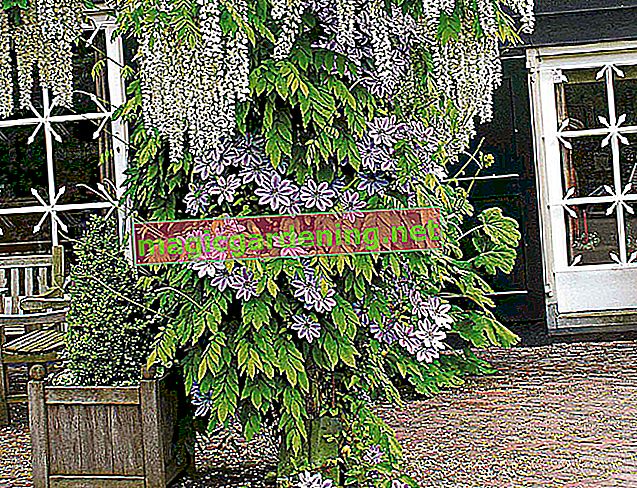
Knotweed is a climbing plant
Climbing plants are divided into four groups, the distinction being made according to the climbing technique. In addition to clinging-root climbers (e.g. ivy, climbing hydrangea) there are also climbing plants (e.g. clematis), spreading climbers (e.g. blackberries) and climbing plants, which also include the knotweed. Creepers climb up on a support that they wrap tightly or loop around. For this reason, the knotweed absolutely needs a climbing aid.
also read
- Planting knotweed - achieve rapid and lush greening
- Combat knotweed effectively
- Knotweed isn't an evergreen
Suitable climbing aids for the knotweed
Climbing aids or climbing aids should be attached in such a way that the knotweed is kept away from gutters, pipes, lines, windows and roofs - the plant has a considerable destructive power. Attach stable trellis (bamboo as a material is unsuitable for this), climbing sticks or even rope systems in such a way that they keep the plant away from the facade, etc. The knotweed also thrives in the shade, but - like all climbing plants - it always strives towards the sun.
Knotweed not suitable for mixed planting
Also because of its strong, displacing growth, the knotweed is not suitable for mixed planting and should be planted as far away as possible, especially from trees and bushes. These are easily entwined and crushed - the knotweed even manages to cause strong trees to die off and thus to topple over time. When planting, make sure that the knotweed has enough space and space to grow - balconies or the like are also unsuitable for the same reason.
Stop knotweed in good time
With a growth rate of up to eight (and more) meters annually, the knotweed is one of the fastest growing climbing plants. Its shoots lignify, and over time the plant forms a considerable trunk. In addition, the knotweed wraps around everything that gets in its way and can cause considerable damage. In order to avoid this and excessive growth, the plant must be cut back regularly.
- Radical pruning takes place in early spring.
- The knotweed is cut back close to the ground.
- All previous year's shoots are removed.
- The new shoots are directed along the trellis as desired.
- Shoots in an unsuitable direction of growth must be removed immediately.
Tips & Tricks
The knotweed family is very species-rich. In addition to the climbing plant Fallopia baldschuanica, there is also a ground-covering and several herbaceous knotweed that are also suitable for the home garden.








